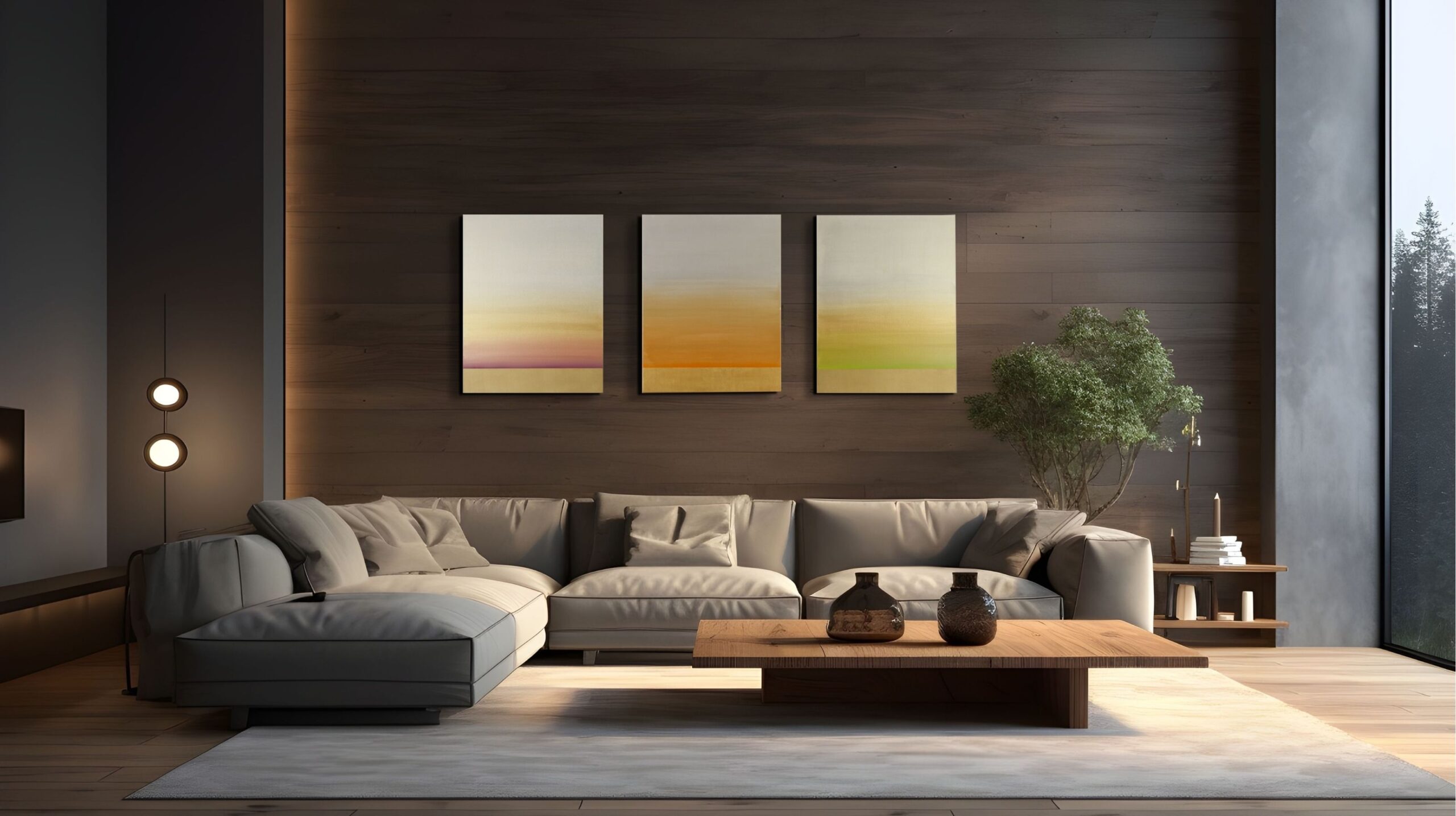This letter opens the Artist Orchard Series—portraits of women whose art carries silent codes for the feminine. These works are not chosen for fame or trend, but for the way they embody coherence, freedom, and the power to grow beyond the trellis.
There are mornings when light refuses to stay still. It slides across the walls of her studio and pools at the base of each canvas before rising again, a quiet pulse between violet and purple. The air smells faintly of resin and linen, and somewhere in the background wind chimes hum, almost inaudible. The scent of turpentine lingers just enough to remind you that creation is physical, not mystical. That’s how it began—me standing before one of Ernestine Faux’s violet fields, watching light dissolve into pigment. For a moment, the canvas seemed to inhale. I found myself breathing with it, feeling something ancient in me exhale.
It wasn’t paint anymore. It was coherence, made visible—a field that rearranged the tension inside my own body. It felt less like looking at a work of art and more like standing inside a pulse of being, where the boundaries between creator, observer, and color dissolved into one shared breath.
Behind me, the studio was quiet except for the soft clink of jars being rinsed. A faint breeze moved through the half-open window, shifting the scent of oils and drying canvas. Ernestine worked silently at another canvas, her hands tracing an invisible rhythm on the edge of a frame. I could almost feel her awareness expand, holding space for what was still becoming. It struck me how similar this was to the women I work with—how leadership, too, begins with attending to what cannot yet be seen. The act of waiting becomes a kind of devotion, a practice of presence rather than control.
When women stop shaping themselves only for visibility and begin to move from resonance, their power starts to draw geometry—not goals. The same current that once adapted now begins to organize. It’s what happens when energy finally remembers its home. Ernestine once said to me, “I never paint what I see. I paint what begins to breathe once I stop controlling it.”
That is coherence—pigment reorganizing itself around freedom. It is also what happens when leadership ceases to perform and begins to listen. The field responds to stillness; direction is born from equilibrium.
I recall a conversation with a client, a C-Level executive who carried entire systems in her body. During a silence in our session, she said, “It feels as if my breath is drawing a pattern.” She didn’t yet have words for it, but her nervous system had entered coherence—her leadership geometry shifting from effort to flow. Ernestine’s art feels the same: the moment form stops pushing and begins to listen back.
I once asked her, “When you begin painting, where do you start?”
She smiled and replied, “I connect with my inner power—my feminine essence—and with the trust that creation is moving through me.”
For Ernestine, control is a beginning, not an endpoint; it’s the craft—the technical mastery that steadies the ground. She builds layer upon layer—metallics, translucence, pigments that almost disappear—and then she releases. That moment of surrender, what she calls her holy moment, is when inner strength turns into authenticity.
“The power rushing through me while painting is highly condensed energy,” she said softly. “That’s why I can work for three or four days on my large circles, rotating my hands for hours, without fatigue or pain. What remains is movement suspended in stillness.”
That letting go is the same threshold women face when they leave the trellis of expectation. They, too, must trust that what holds form will not collapse once structure releases. That is the true test of coherence.
I have watched this shift in boardrooms and retreats alike: the moment a woman stops performing competence and allows truth to speak through her. The air thickens, the conversation recalibrates, and the room begins to organize around her quiet authority. That is the same frequency that moves through Ernestine’s canvases—the architecture of coherence taking form.
In one of my Deep Cycle sessions, the woman said, “It feels like my words start to breathe differently.” That is what coherence sounds like when it becomes audible.
The trellis forces us to grow in straight lines. Art refuses that. It curls, spills, listens. Ernestine paints the moment when the branch forgets the wire. Every stroke feels like a negotiation between containment and release—between the learned and the remembered. Her work becomes a visible anatomy of liberation, the choreography of an untamed intuition.
To stand before her work is to feel something unclench. The eyes soften first, then the breath. The body recognises freedom before the mind names it. That recognition is its own kind of leadership training—a silent tutorial in how presence reorganizes space. One painting becomes a mirror for what power feels like when it stops explaining itself.
Sometimes I think of Ernestine’s paintings as emotional blueprints. They show what happens after the decision—the silent recalibration that follows every breakthrough. There is always a moment of disorientation when the old lattice no longer holds, and yet the new structure hasn’t fully formed. Ernestine’s colours live in that in-between. They hold the tremor of transformation, the shimmer of uncertainty before it settles into strength.
To see in layers—to hold stillness and motion at once—is already a leadership capacity. It’s how coherence sees. Perhaps that’s the hidden curriculum of art: it teaches perception to feel again.
When I work with women who carry entire systems in their nervous systems, I often notice that the body responds first. Breath steadies, shoulders drop, voice slows. Leadership, like art, begins with physiological truth—the body’s agreement with what the soul already knows.
What I carry out of Ernestine’s studio is never just an image. It’s a reminder that every creation, whether in pigment or in presence, begins with surrender. The same light that entered her canvas enters every conversation where coherence is allowed to lead. There, power reorganizes itself—not to dominate, but to harmonize.
Maybe art is what remains when power stops performing—the afterglow of a woman who no longer asks permission to create. And maybe that is what the new architecture of feminine leadership looks like: less structure, more field; less effort, more alignment.
To live like that is not to escape discipline, but to embody a subtler one—the discipline of listening. Of letting what breathes through you become visible without interference.
Standing once more before the painting, I noticed the afternoon light had shifted. The violet was darker now, almost storm-coloured, and the purple edges caught the last glimmer of day. It felt like closure, but not an ending—more like the way an exhale concludes without needing explanation.
The work had finished speaking, yet something inside me kept listening. Perhaps that is how coherence continues—quietly, through the ones who stay attuned.
And maybe that’s what this Orchard truly is: a living gallery of such moments, where colour, leadership, and power learn to breathe together.
Art featured: Ernestine Faux
Artist’s note: “ART is energy — first and foremost.
Colour for me is emotion given shape through my artwork, paintings, 3D objects, or sculpture. Each field I paint is a source, not a surface: a portal of light condensed into matter.
As Wassily Kandinsky wrote, “Colour is the key, the eye the hammer, the soul, the piano.”
When I work, these forces begin to sound together —when it falls into place, it becomes silence – and that’s when I know the painting is complete“.
✨ If this resonated with you, I invite you to stay in the Orchard—a field of reflection on women, power, and leadership.
More of this work lives inside my e-book Unapologetic Power.
About the Author
30 years of international leadership experience — 20 of those in corporate executive positions — and 15 years empowering women in top roles.
Renate Hechenberger opens spaces where the inner architecture emerges—an architecture that anchors women in their feminine power.
© 2025 Renate Hechenberger. All rights reserved.
Visual Credit: From the series “Icons” by Ernestine Faux — image used with permission from the artist.

